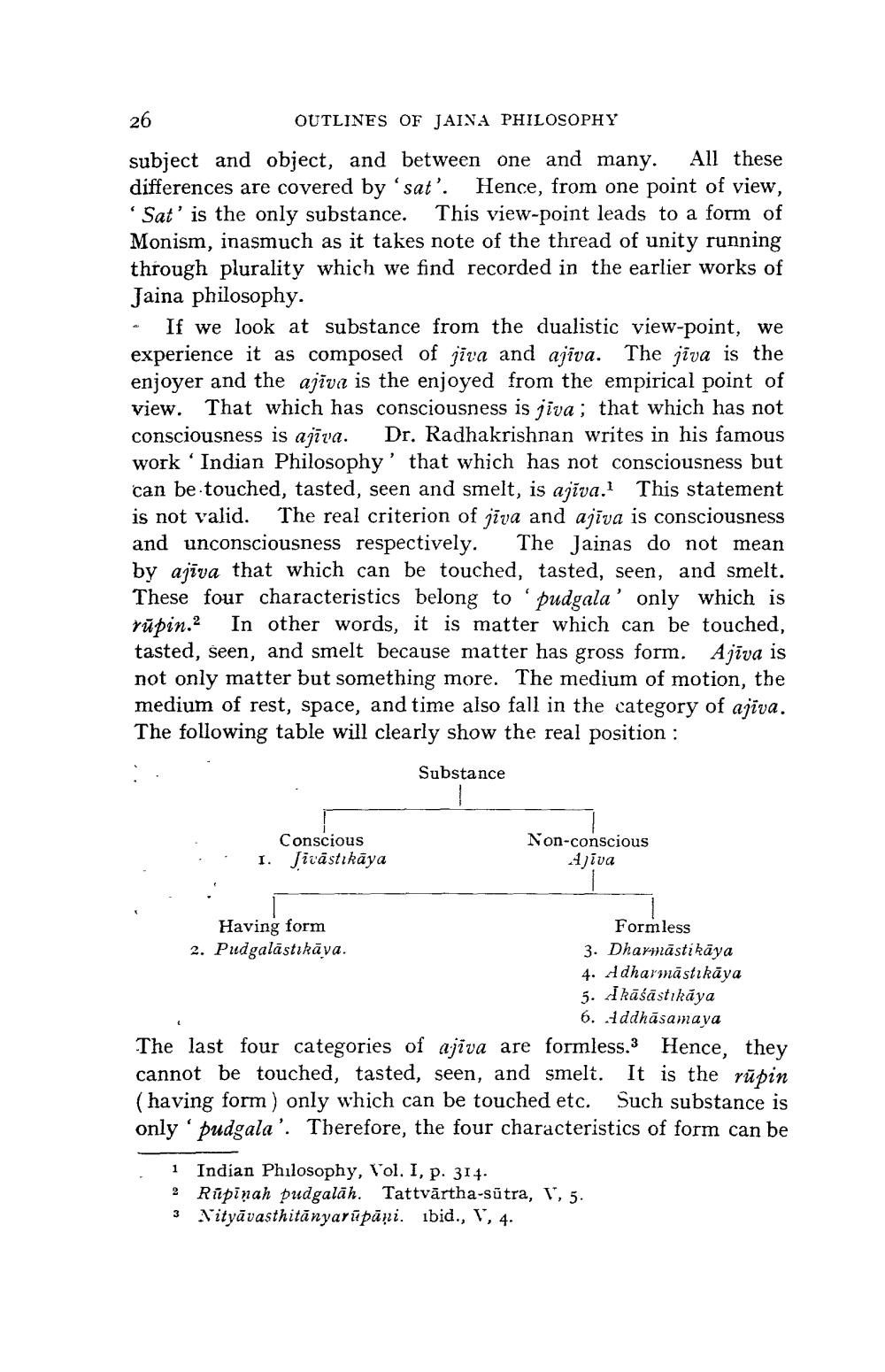________________
26
OUTLINES OF JAINA PHILOSOPHY
subject and object, and between one and many. All these differences are covered by 'sat'. Hence, from one point of view, 'Sat' is the only substance. This view-point leads to a form of Monism, inasmuch as it takes note of the thread of unity running through plurality which we find recorded in the earlier works of Jaina philosophy. . If we look at substance from the dualistic view-point, we experience it as composed of jiva and ajiva. The jiva is the enjoyer and the ajīva is the enjoyed from the empirical point of view. That which has consciousness is jiva; that which has not consciousness is ajīva. Dr. Radhakrishnan writes in his famous work Indian Philosophy' that which has not consciousness but can be touched, tasted, seen and smelt, is ajīva. This statement is not valid. The real criterion of jiva and ajiva is consciousness and unconsciousness respectively. The Jainas do not mean by ajīva that which can be touched, tasted, seen, and smelt. These four characteristics belong to 'pudgala' only which is rūpin.2 In other words, it is matter which can be touched, tasted, seen, and smelt because matter has gross form. Ajīva is not only matter but something more. The medium of motion, the medium of rest, space, and time also fall in the category of ajiva. The following table will clearly show the real position :
Substance
Conscious 1. Jicāstikāya
Non-conscious
4)īva
Having form
Formless 2. Pudgalāstıkāva.
3. Dharmāstikāya 4. Adharmāstıkāya 5. dkāśāstıkaya
6. iddhāsamaya The last four categories of ajiva are formless. Hence, they cannot be touched, tasted, seen, and smelt. It is the rūpin (having form) only which can be touched etc. Such substance is only' pudgala'. Therefore, the four characteristics of form can be
1 Indian Philosophy, Vol. I, p. 314. 2 Räpinah pudgalāh. Tattvārtha-sūtra, V, 5. 3 Vityāvasthitānyarūpāņi. ibid., 1, 4.




